A Place Inscribed in Caves Coins and Nature
On a snug nook of the western ghats, a land cuddled with nature’s wonders and a trader’s toll booth of the Satavahanas awaits the trekkers and historians alike. Where miraculous water gushes out to salute the skies instead of paying homage to the ground, Naneghat is a unique mountain pass worth exploring.
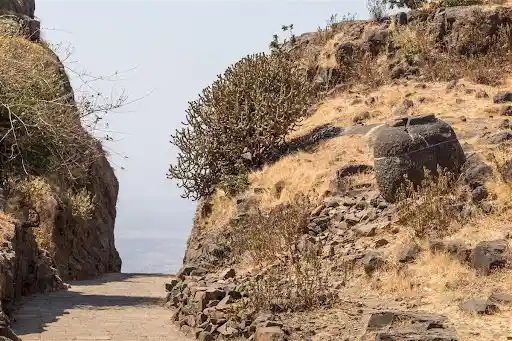
The Naneghat Mountain Pass with the historical stone pots to collect toll tax Source: Kevin Standage
A serene land near the historical city of Junnar in Maharashtra’s Pune district, Naneghat represents the ancestry of the state it resides in. The word Naneghat itself is steeped in its lineage with the illustrious trade and commerce of the ancestors who traversed this mountain pass connecting the Konkan coast of Kalyan with Junnar the hub of ancestral traders. Nane means coins and ghat means pass.
The large stone vessel lodged at the mouth of the mountain path proves the land’s essential feature that derived its name. The Jakatica Ranjan or the large cauldron-like pot for toll collection served its purpose for thousands of years. Just a few steps away on the opposite side there is another stone vessel in ruins which indicates the tolling booth must have been meant for a two-way toll tax collection. So, we can say Naneghat is one more reason for Maharashtra to be proud.
Wondering why we are boasting here about the ancestry and ruling regimes of Maharashtra? Well, because Naneghat is a part of this state and also holds the evidence that connects a thread of its ancestry to the heritage of this land. The Naneghat rock-cut cave booked this land of ghats on the historical pages of the 1st century BCE. The inscriptions on the walls of this cave stamped the reign of the prominent ruler of the Satavahanas – Gautamiputra Satakarni on this ghat.
Naneghat is also a major tourist attraction for the miraculous reverse waterfalls. The breathtaking views of the western ghats are adorned with this gem of water that does not fail to enthral the visitors not just for its gravity-defying waterfall but also for nature’s glory that surrounds it. The best time to witness this phenomenon is during the monsoons when the force of water is strong yet cannot contend with the force of the churning winds through the mountain valleys and elevate the waters to gush out towards the skies.
Trekking, rappelling, nature’s treat, and rocky rest houses in caves enriched with inscribed legends of ancient history make Naneghat the melting pot where ancient valourous spirits meet with their adventurous contemporaries and archive the heritage of Maharashtra and India to celebrate with eternal pride.
The highest peak near this region of the Western ghats is the Nancha Angtha which literally means Nana’s Thumb – a name derived from the thumbs-up like a sharp peak that rises tall against all the other mountains around. Adventure lovers cater to their adrenaline rush through the rappelling spot on this peak provided by the tourism department.
Many centuries later, the Mughals turned it into a prison where Murtaza Nizam – the last ruler of the Adilshahi dynasty was imprisoned when the Mughals annexed Ahmednagar. Unfortunately, in 1818 the fort was captured by the British. They blocked the west gate while the steps were razed down.
The trekkers can still find traces of landmines and after a few yards of stone steps, they may have to climb through cliff-climbing skills through the grooves and niches in the steep above where the steps are destroyed. Col. Prother of the East India Company later destroyed most of the fort that had stood as a formidable source of security to the entire plateau for centuries until then.
Maharashtra is a part of the Indian lands that traces its ancestry to the Stone age and the age when humans discovered copper and began creating tools and weapons with the metal evincing a Neolithic feature. There are contentions regarding the inherent regime of Satavahanas being indigenous to Maharashtrian lands because the coins of Simukha – the first ruler, of this dynasty, were also found in Andhra Pradesh. Yet, the inscriptions of Ashoka at Sopara claim that the dominant ruling dynasty was the Mauryans
The engravings in Brahmi script on the walls of this cave reveal an essential link to the earliest history of Maharashtra and amazingly narrate in detail about the great king Satakarṇi and his queen Naganika’s philanthropy in the form of donations on the different occasions of Vaidika Yajnas. The inscriptions, relics, and ruins found in and around Naneghat prove that this ghat was not just a well-treaded mountain pass busy with traders and caravans, but also the artificially excavated cave indicate the public-oriented administration of the king’s regime.
The gigantic rocks on either side of the path that had allowed the inlanders to connect with the seas beyond these mountains, prove that they were part of a protective fort for the traders. If one follows the stone cut narrow passage at a point it feels like standing at the edge of the world. Water tanks, cisterns, and reservoirs are scattered in the region and the artificially excavated caves are the features of the regime infused with the service towards the praja.
The caves acted as a guest house or shelter and respite for the weary traders and travellers who traversed through this pass. The inscriptions in one of the crucial caves have immortally recorded the personal involvement of Queen Naganika who has revealed, that the prevalent deities of the Deccan region during her era were of the Vaidika Dharma. The invocations raised in the inscriptions transport one into that period in history where they seemed to pay their respects to Saṃkarṣaṇa and Vāsudeva (associated with Pancaratra deities) along with the Vaidika Gods and the guardians or lokapalas like Yama, Vāsava, Kubera and Varuṇa.
Jivdhan fort is another trek-worthy site near Naneghat that is part of the history of this land. The fort stands at 3754 feet and pays homage to the feats of Stavahanas who decked the Sahyadri mountains with forts and mountain passes to create a network of social and commerce interchange. Jivdhan fort was built to overlook and act as a backup to guard the Naneghat fort with the tolling booth that was one of the rare paths connecting the mainlands with the seas in those times.

Jakatica Ranjan on both sides of the path. Source: Kevin Standage
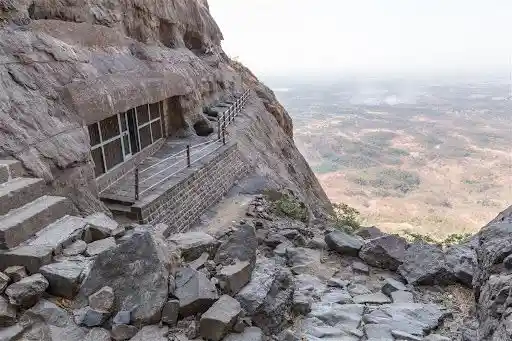
The artificial cave with cisterns and inscriptions on its walls. Source: Kevin Standage
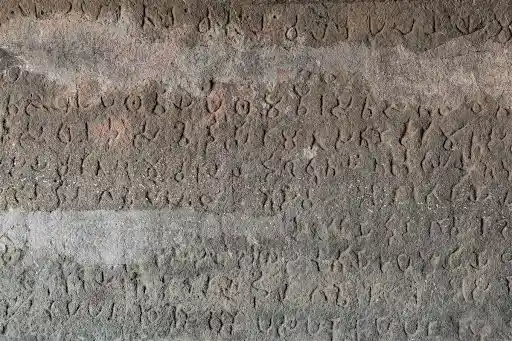
The inscriptions in Brahmic script Source: Kevin Standage
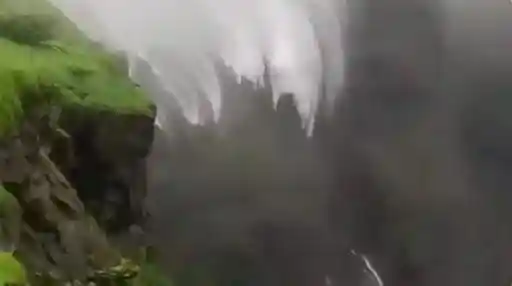
Naneghat reverse waterfall Source: Times Travel
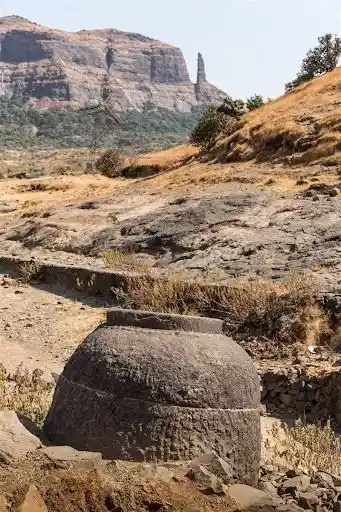
Jivdhan fort is seen in the background to the toll-collecting pot. Source: Kevin Standage
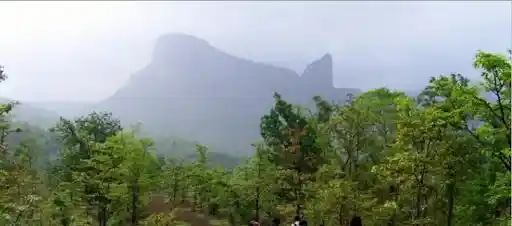
The unique peak of Naneghat Source:maajhibhatkanti.wordpress.com


